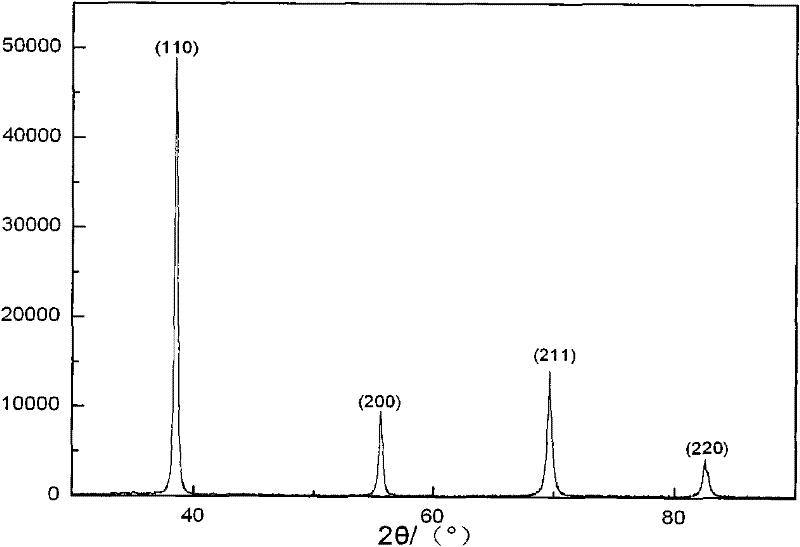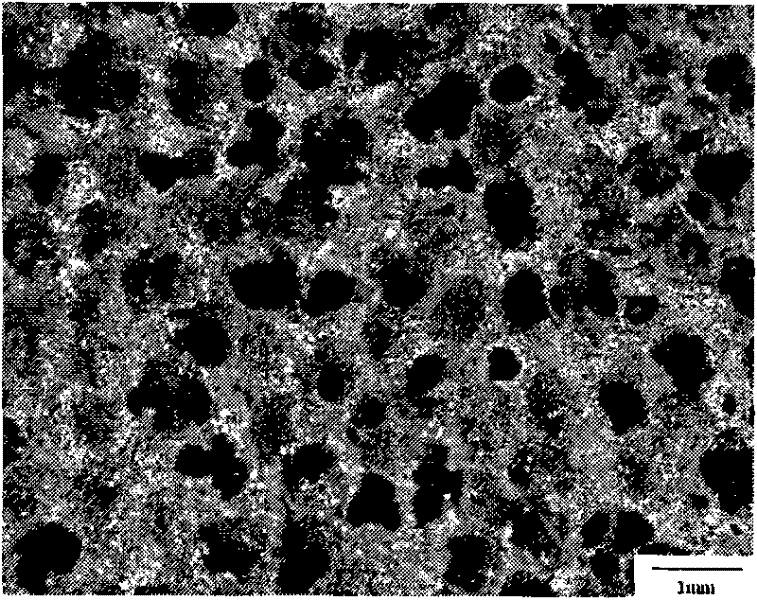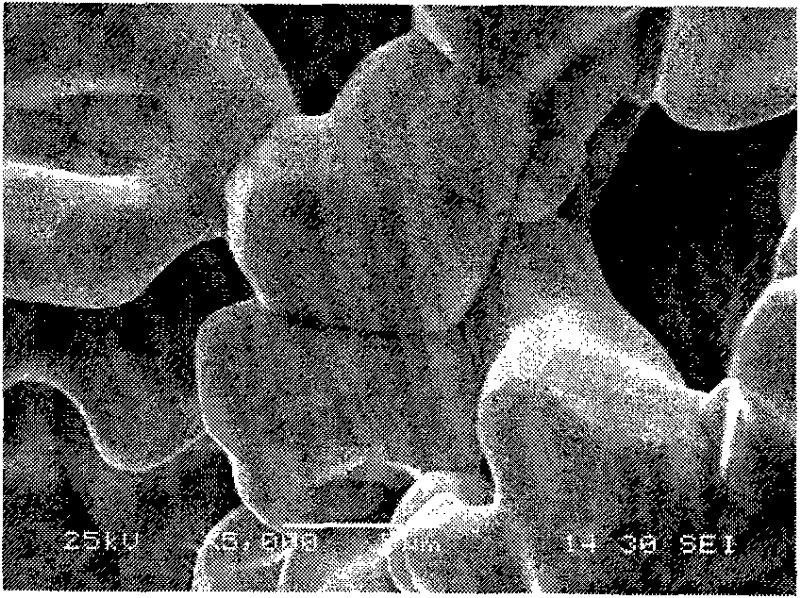Medical metal implant material porous niobium and preparation method thereof
An implant material and porous niobium technology, applied in the field of porous medical metal implant materials, can solve the problems of insufficient finished product purity, reduced biosafety, carbon skeleton residue, etc., to improve ductility, simple process, and ensure biocompatibility. and biosafety effects
- Summary
- Abstract
- Description
- Claims
- Application Information
AI Technical Summary
Problems solved by technology
Method used
Image
Examples
Embodiment 1
[0036] Example 1: Weigh 12.5 g of polyvinyl alcohol and put it into a container with 240 ml of distilled water; place it on an electric stove to heat and stir to make it into an aqueous solution of polyvinyl alcohol. Use a 200g balance to weigh 60g of niobium powder with an average particle size of less than 43 microns and an oxygen content of less than 0.1%, add 15ml of cooled polyvinyl alcohol aqueous solution, stir and mix evenly, and make it into a niobium powder slurry. Use 10×10×30mm porous polyurethane foam (average pore diameter is 0.48mm, density 0.025g / cm 3 , hardness 50°) into it and pour until the pores of the polyurethane foam are filled with the niobium powder slurry, then clamp the polyurethane foam filled with the niobium powder slurry and put it into a porcelain plate. Dry in a vacuum drying oven at a drying temperature of 60° C., a drying time of 8 hours, and a vacuum degree of 1 Pa. Degreasing treatment: the vacuum degree is lower than 1×10 -3 Pa, temperat...
Embodiment 2
[0039] Example 2: Weigh 10 g of polyvinyl alcohol and put it into a container with 200 ml of distilled water; place it on an electric stove to heat and stir to make it into an aqueous solution of polyvinyl alcohol. Use a 200g balance to weigh 40g of niobium powder with an average particle size of less than 43 μm and an oxygen content of less than 0.1%, add 10ml of polyvinyl alcohol aqueous solution, stir and mix evenly, and make it into a niobium powder slurry. Use 10×10×25mm porous polyurethane foam (average pore diameter is 0.56mm, density 0.030g / cm 3 , hardness 60°) into it and pour until the pores of the polyurethane foam are filled with the niobium powder slurry, then clamp the polyurethane foam filled with the niobium powder slurry and put it into the porcelain plate. Dry in a vacuum drying oven at a drying temperature of 80°C for a drying time of 4 hours and maintain a vacuum of 1×10 -2 Pa. Degreasing treatment: the vacuum degree is lower than 1×10 -3 Pa, temperature...
Embodiment 3
[0042] Example 3: Weigh 11 g of polyvinyl alcohol and put it into a container with 220 ml of distilled water; place it on an electric stove to heat and stir to make it into an aqueous solution of polyvinyl alcohol. Use a 200g balance to weigh 45g of niobium powder with an average particle size of less than 43 μm and an oxygen content of less than 0.1%, add 12ml of polyvinyl alcohol aqueous solution, stir and mix evenly, and make it into a niobium powder slurry. Use 8×8×25mm porous polyurethane foam (average pore diameter is 0.70mm, density 0.035g / cm 3 , hardness 70°) into it and pour until the pores of the polyurethane foam are filled with the niobium powder slurry, and the polyurethane foam filled with the niobium powder slurry is taken out with clips and put into the porcelain plate. Dry in a vacuum drying oven, the drying temperature is 80 ° C, the drying time is 6 hours, and the vacuum degree is kept at 1×10 -1 Pa. Degreasing treatment: the vacuum degree is lower than 1×...
PUM
| Property | Measurement | Unit |
|---|---|---|
| particle size | aaaaa | aaaaa |
| diameter | aaaaa | aaaaa |
| pore size | aaaaa | aaaaa |
Abstract
Description
Claims
Application Information
 Login to View More
Login to View More - R&D
- Intellectual Property
- Life Sciences
- Materials
- Tech Scout
- Unparalleled Data Quality
- Higher Quality Content
- 60% Fewer Hallucinations
Browse by: Latest US Patents, China's latest patents, Technical Efficacy Thesaurus, Application Domain, Technology Topic, Popular Technical Reports.
© 2025 PatSnap. All rights reserved.Legal|Privacy policy|Modern Slavery Act Transparency Statement|Sitemap|About US| Contact US: help@patsnap.com



